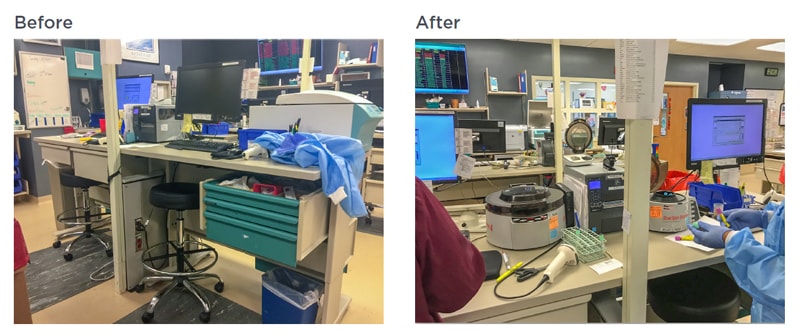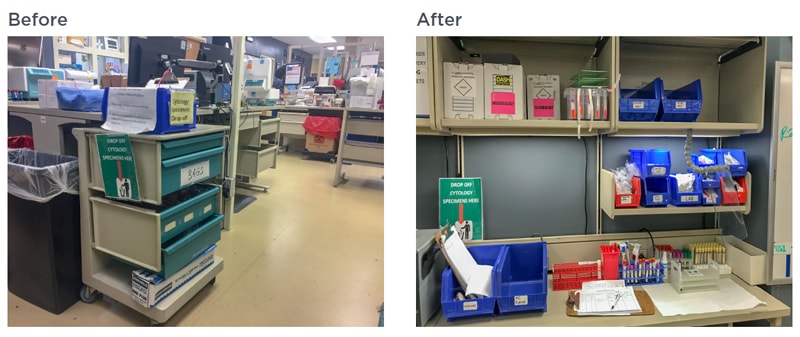About 5S Audits
What is 5S?
5S is a foundational principle of Lean management systems. The acronym 5S stands for: sort, set in order, shine, standardize and sustain.
In Lean manufacturing organizations, a 5S program is used to optimize the work environment. This is because cleaning the workplace and making items easy to find helps improve productivity over the long term.
The 5S relationship to continuous improvement
5S events are often misconstrued as simply work area cleaning or straightening exercises. However, 5S in a laboratory environment is actually meant to assist with the design of standard work that meets “necessary” quality and productivity measures.
5S can be easily associated with ISO and CAP requirements. However, before you can focus on the necessary, you have to remove the unnecessary from the environment. This leads to sorting, straightening and shining activities.
Engaging the Lean enterprise in 5S
5S is also a team engagement strategy. The team responsible for the work gather together to use the appropriate tools, then decide what’s needed to complete tasks on time and defect free.
This generates conversation around best practices and lays the groundwork for discussions pertaining to documentation of standardized best practices and their sustainment. Hospital teams in a laboratory moving to that point in their 5S journey are making headway toward becoming high performing. As high-performing teams, they are systematically defining and monitoring standard work to improve quality related to work sequence and processes.
This mindset and the associated behaviors lead to outcomes that are impactful and powerful. Think about how Lean a laboratory would be with engaged employees sharply focused on sustainment of standardized best practices. That’s why 5S is considered a foundational set of tools that assists organizations with Lean maturity development (see Figure 1).
The Lean System
![5S + Safety supports leveled workload, which supports a Lean system—comprising just-in-time, standard work and automation]](https://media.beckmancoulter.com/-/media/diagnostics/corporate/images/publications/alamance/figure-1-alamance-lean-system-600x462.jpg?rev=4a4707f9160243f580038c4e89d5c68f&hash=55D8E7773BAB6569E0B2EFB25BAC78EC)
Figure 1. 5S + Safety is the foundation of a Lean system.
 English
English




